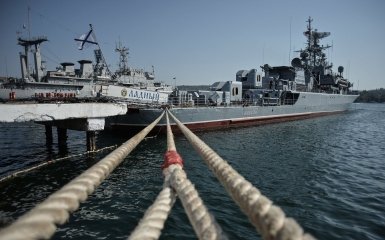British spies decided to analyze the latest activity of the Black Sea Fleet of the Russian Federation, which is currently based in Novorossiysk.
The Black Sea Fleet of the Russian Federation became less active
The Ministry of Defense of Great Britain draws attention to the fact that on April 1, a missile frigate of the "Gryhorovych" class conducted combat firing in the port of Novorossiysk.
According to foreign intelligence, modern Russian ships, such as the Grigorovich-class frigate, have vertical launch systems for firing cruise missiles at sea and land targets.
Understanding that such missiles have historically been reloaded in Sevastopol is essential.
However, Russia has mostly withdrawn its ships and submarines of the Black Sea Fleet from Sevastopol further east to Novorossiysk. After the dismissal of the commander of the Black Sea Fleet of the Russian Federation in March 2024, the fleet was the least active since the beginning of the war, says the official statement of the Ministry of Defence of Great Britain.
Why did the Kremlin transfer the Black Sea Fleet of the Russian Federation to Novorossiysk?
British scouts have concluded that the Black Sea Fleet will remain in Novorossiysk because, as of today, this is the best way to protect it from an attack by Ukraine.
In addition, it is emphasised that the infrastructure of technical maintenance, logistics and handling of weapons in the port of Novorossiysk was quite possibly improved to support the new conditions of basing the ships of the Black Sea Fleet of the Russian Federation for an indefinite period.
It is also worth reminding that recently, the Ukrainian Navy spokesman, Dmytro Pletenchuk, warned that the greatest danger for Ukraine is three enemy submarines in the Black Sea.
They have approximately 10 carriers in total. This number may vary depending on combat readiness. Of course, we can say that there are still about 40 units that can be dangerous, Pletenchuk explained.




